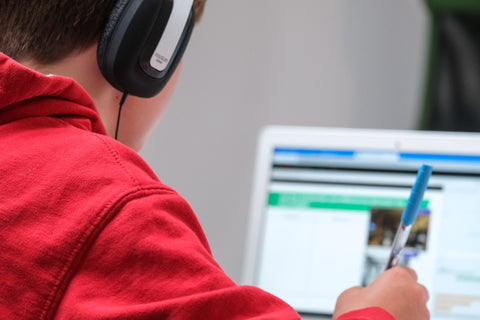Improving The Classroom Learning Environment For Students With Autism (ASD)
According to research done by the Centre for Disease Control and Prevention (CDC), 1% of the world’s population are living with an autism spectrum disorder (ASD) - that's around 1 in 59 children. ASD has a very wide range of symptoms and different levels of severity. For children with autism, the traditional classroom learning experience can sometimes be challenging and overwhelming. But using hybrid learning techniques and creating safe spaces within the class can help support students with ASD and improve their schooling experience.
Hybrid learning can be beneficial to students on the autism spectrum
Traditionally, learning has always had a big emphasis on listening to your teacher and then writing information down. This can present a big problem for students with ASD who may have difficulty with social interaction, concentration or limited motor skills. This doesn’t however mean that they are not capable of learning - they just learn in a different way. Using technology in the hybrid learning method can help students with ASD enormously. The use of tablets, smartphones and interactive whiteboards mean that you can combine visual aids and video with curriculum material. This can be done by the teacher in the classroom and also at home. Text-to-speech software as well as picture flash cards can also be very helpful for non-verbal students. The key to successful learning is to make the classroom as interactive as possible.

Image credit: Compare Fibre - Unsplash
Make sure students have access to a safe sensory space
For many children with autism, a noisy, busy classroom can simply become overwhelming. It can be a challenge to listen and concentrate when there is a lot going on around you, and this can lead to students having meltdowns. Creating a safe, sensory space within a classroom where students can go can help with this and prevent children experiencing sensory overload.
A quiet corner of the room with comfortable seating, such as an inflatable sensory cushion, padded Mooshy mat or pillows and cushions provide the perfect sensory chill out zone. Including items in the sensory zone for children to hold - such as the Jellystone Calm Down sensory bottle, emotions cards or books, can help kids with ASD move their thoughts away from any frustration and focus their mind on emotionally regulating.
 Image: Creative Sprout's Emotions cards for kids
Image: Creative Sprout's Emotions cards for kids
Understanding the importance of routine
Having a structured routine is important for all children in a classroom environment, but even more so for students on the autism spectrum. Routine provides children with a sense of safety and security - knowing what will happen and when also reduces anxiety and stress. In a classroom, it will help to have a visual display of the daily routine showing when break times and subject lessons happen. Using images can help children process this information.
Learning in a classroom doesn’t have to be an overwhelming experience for students with ASD. Using hybrid learning and sensory calming tools can help improve the environment, making school life fun and enjoyable for all students.
This guest post article was written by Briana Hilton.
